LiFe batteries
LiFe stands for lithium iron phosphate, also called LiFePO4 in chemistry. That will be LiFe for us ![]() . They are sometimes called A123 batteries: in fact, this is a brand (with the reputation of being excellent quality). It seems that LiFe are the most used to power mobile devices (phones, pads).
. They are sometimes called A123 batteries: in fact, this is a brand (with the reputation of being excellent quality). It seems that LiFe are the most used to power mobile devices (phones, pads).
The is the most stable lithium battery variant, thus the safest to use, not counting that the battery gel does not react to oxygen in the air (unlike LiPo): if the cell membrane gets punctured, it won't catch fire. This is the one and only lithium battery type recommended by Tamiya: this information is important whenever you plan to use the cut-off feature in their ESCs (for those featuring it: read this article).
Since 2009, Tamiya offers three LiFe battery packs in their catalog, in addition to a dedicated charger ref 55103 LF 6 (or 55104, with an LF2200 pack):
Tamiya 55105 LF1100
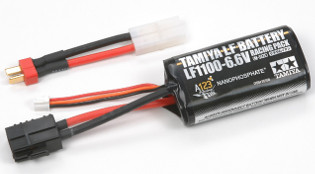
Tamiya 55109 LF1600
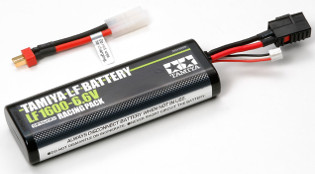
Tamiya 55102 LF2200
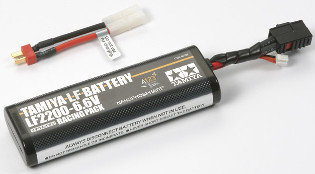
The first one is a "short" version weighting 100g suited for SRB (Buggy Champ) and RM-01 chassis: it looks like a softcase package. The two others are "classic" weighting 200g in a hardcase stick format which is compatible with a great variety of their chassis (list with photos).
You will notice there is always a Deans (or T-plug) adapter: see below the section about plugs for more information.
LiPo batteries
LiPo stands for lithium polymer, thus sometimes you can find them under the name of lipoly.
Variant of the new battery generation that is now massively adopted by the RC industry, the market offer in LiPo battery packs is wide and highly varied, either in voltage (1S to over 14S), formats... or quality. Unfortunately, you may find everything, from trustworthy brands and products to imitations and other products ready to explode as soon as you plug them. So be careful, read before you buy and ban any "no-name".
When speaking about the variety of available formats, here's a small selection in a store and only in 2S hardcase:
Brick with wires on the side
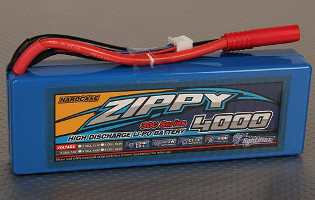
Brick with wires on top
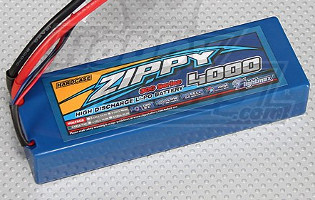
Brick with wires on top corners
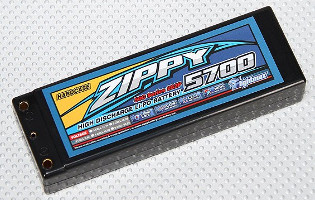
"Shorty" brick
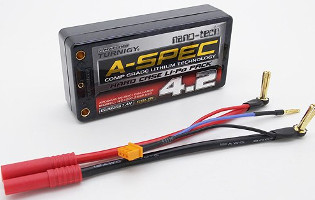
Saddle
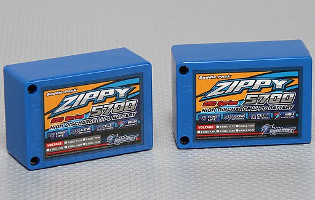
LThe favorite format of LiPo packs is a 140mm long brick with wires connected at different locations. There is also the 100mm long Shorty brick format and the Saddle format made of two 70mm bricks. This variety is useful to best suit the different chassis battery tray formats, but unfortunately, to almost none of Tamiya chassis (except some among the most recent).
Hopefully, there are also LiPo packs in the traditional stick format that better suit Tamiya chassis. Here are 2 examples:
Nosram
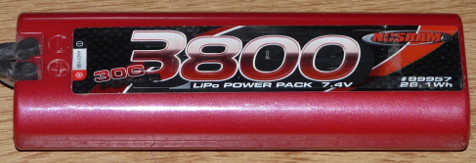
Gens Ace
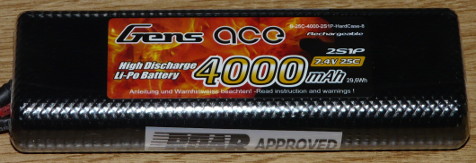
Unfortunately, theses packs are 138mm long compared to the 130 to 135mm long NiCd / NiMH packs. These extra millimeters make them incompatible with most Tamiya chassis, in particular the vintage ones made for NiCd packs. So, you will find a specific section near the end of this article about LiPo / LiFe packs which are compatible with almost all Tamiya chassis.
LiPo or LiFe?
Undoubtedly, that is a good question to ask.
When reading LiFe/LiPo comparisons, you often read a list of LiFe drawbacks: more expensive, less capacity, lower discharge rate, bigger size. OK, so here's a direct comparison between products from one manufacturer (thank to them for granting me the use of their photos and product specifications in this article):
ZIPPY Flightmax 4200mAh 2S1P 30C / 40C LiFePo4 Pack
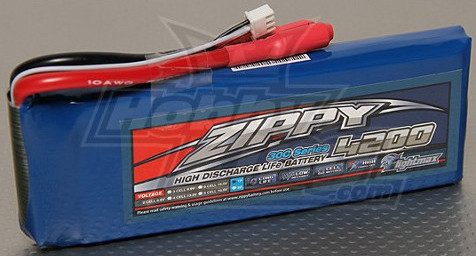
ZIPPY Flightmax 4500mAh 2S1P 30C / 40C LiPo Pack
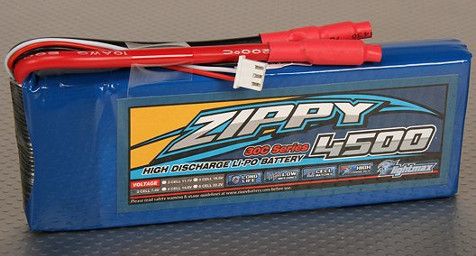
Indeed, there are differences between these two LiFe and LiPo packs, but they are minor apart from the voltage (6.6V / 7.4V). Sorry, I almost forgot the price difference: have a seat, we're talking about... 0.68€ for a total price of about 16€(!). In fact, the price difference should be in favor of LiFe packs because their production cost is lower than LiPo's. However, in the RC world, the LiPo demand is much bigger, so production quantities are very different, leading to a reversed price advantage.
Overall, apart form the voltage loss (6.6V vs 7.4V in 2S) compared to NiCd / NiMH, which is more than balanced by the weight reduction and higher discharge rate, it would have been much wiser if the RC industry had chosen security over pure performance. On the other hand, if RC changes so fast, it is also due to high-end racing that is permanently looking for more performance. The benefit is performance and we are left with highly sensible security issues. The following sections are dedicated to bringing you concrete answers to security issues.






